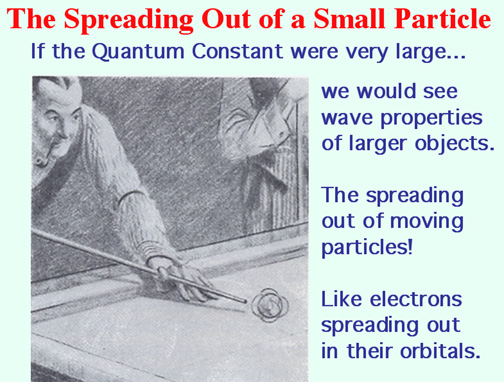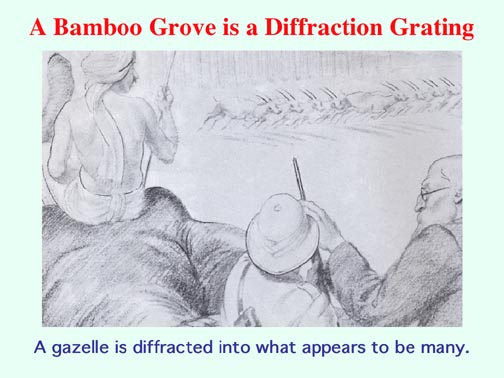Some Mysteries of the Quantum
Taken from the books cited below*







The white ball went in all directions!
________________________
Leaking of a Quantum Particle out of its confines.
When a particle leaks out of an atomic nucleus, we have Radioactivity.

A very large Quantum Constant!
________________________________________
The Heisenberg Uncertainty Principle
That Quantum Again!

"The more precisely the position is determined, the less precisely the
momentum is known in this instant, and vice versa."
--Heisenberg, uncertainty paper, 1927
This is a succinct statement of the "uncertainty relation" between the position and the momentum (mass times velocity) of a subatomic particle, such as an electron. This relation has profound implications for such fundamental notions as causality and the determination of the future behavior of an atomic particle.
Because of the scientific and philosophical implications of the seemingly harmless sounding uncertainty relations, physicists speak of an uncertainty principle, which is often called more descriptively the "principle of indeterminacy."
The uncertainty relations have to do with the measurement of these four properties; in particular, they have to do with the precision with which these properties can be measured. Up until the advent of quantum mechanics, everyone thought that the precision of any measurement was limited only by the accuracy of the instruments the experimenter used. Heisenberg showed that no matter how accurate the instruments used, quantum mechanics limits the precision when two properties are measured at the same time.
These are not just any two properties but two that are represented by variables that have a special relationship in the equations. The technical term is "canonically conjugate" variables.
For the moving electron, the canonically conjugate variables are in two pairs: momentum and position are one pair, and energy and time are another. Roughly speaking, the relation between momentum and position is like the relation between energy and time.
The uncertainty relations involve the uncertainties in the measurements of these variables. The "uncertainty" -- sometimes called the "imprecision"--is related to the range of the results of repeated measurements taken for a given variable.
For example, suppose you measure the length of a book with a meter stick. It turns out to be 23.6 cm, or 23 centimeters and 6 millimeters. But since the meter stick measures only to a maximum precision of 1 mm, another measurement of the book might yield 23.7cm or 23.5 cm.
In fact, if you perform the measurement many times, you will get a "bell curve" of measurements centered on an average value, say 23.6 cm. The spread of the bell curve, or the "standard deviation," will be about 1 mm on each side of the average. This means that the "uncertainty" or the precision of the measurement is plus or minus 1 mm.
So just looking at a particle will disturb its positon. The photons of light you need to see it will push it into a new location!
Sheesh!













